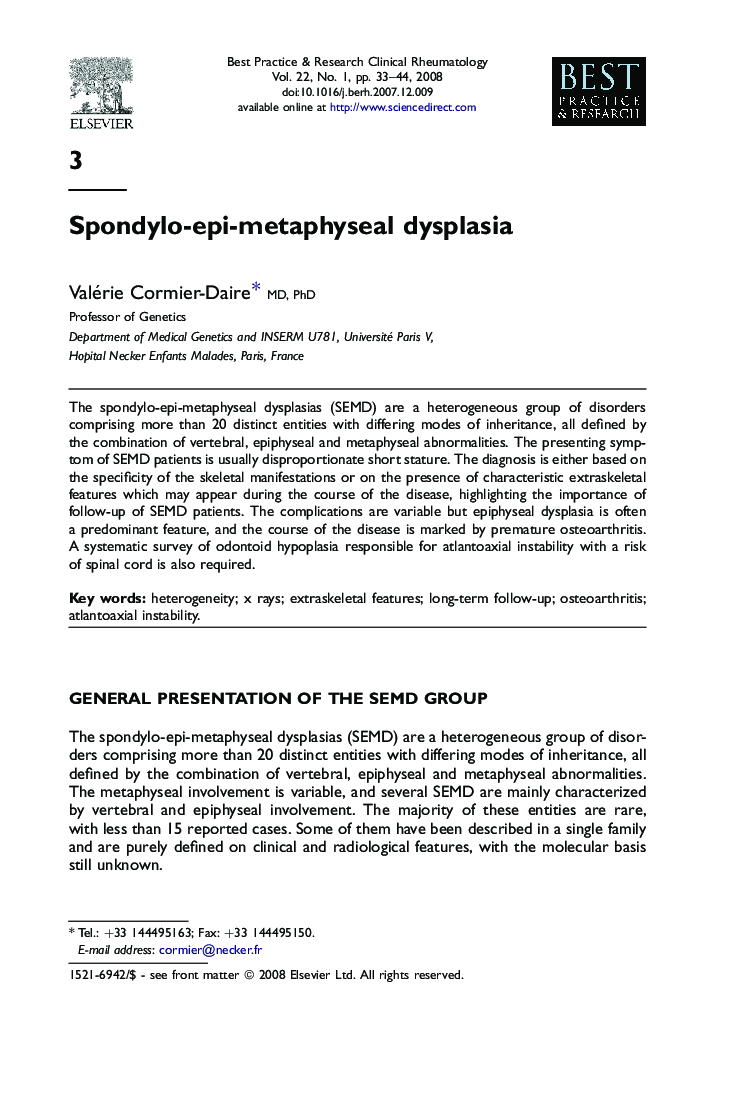| Article ID | Journal | Published Year | Pages | File Type |
|---|---|---|---|---|
| 3343580 | Best Practice & Research Clinical Rheumatology | 2008 | 12 Pages |
The spondylo-epi-metaphyseal dysplasias (SEMD) are a heterogeneous group of disorders comprising more than 20 distinct entities with differing modes of inheritance, all defined by the combination of vertebral, epiphyseal and metaphyseal abnormalities. The presenting symptom of SEMD patients is usually disproportionate short stature. The diagnosis is either based on the specificity of the skeletal manifestations or on the presence of characteristic extraskeletal features which may appear during the course of the disease, highlighting the importance of follow-up of SEMD patients. The complications are variable but epiphyseal dysplasia is often a predominant feature, and the course of the disease is marked by premature osteoarthritis. A systematic survey of odontoid hypoplasia responsible for atlantoaxial instability with a risk of spinal cord is also required.
